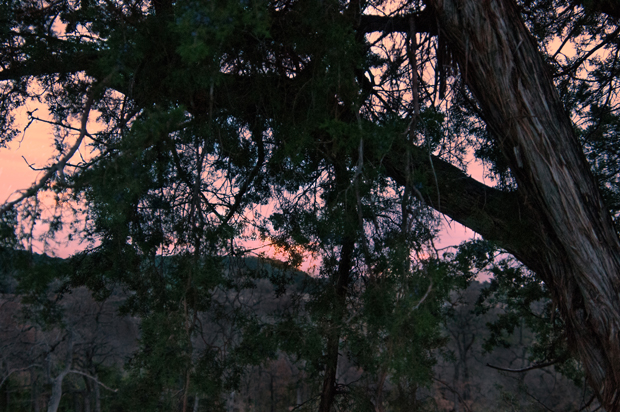Farm & Ranch
Ag Elsewhere: California

Photo and story by Lainey Smith
When I sat down with the editor of NTFR, we discussed several topics to start a new year of exploration into California Agriculture.Originally, this article would cover how farmers and ranchers were recovering from a highly active and highly destructive fire season. As I opened up my laptop to begin setting up interviews, words scrolled across my screen—The Camp Fire.
Within days, The Camp Fire uncontrollablyburned 153,336 acres and claimed 85 lives. With no prior warning, fourteenthousand homes burned and those who inhabited them lost everything. The firefront moved so fast, rescue crews abandonedevacuation procedures—there wasn’t time.
At hospitals and convalescent homes,patients were thrown into vehicles headed toward safety. As the flames subsided,this provided a new challenge—finding the survivors. Evacuations were so chaotic, and the flames burned so hot, hundreds were reported missing.
Cadaver dogs were brought in to find those who perished, while family members went on local news stations in search of missing loved ones. At the time of article submission 249 people were still missing.
The Camp Fire is being named the most destructive fire in California history. What strikes most odd is the fact that this fire occurred months past what is considered California’s “fire season.” While the cause of the fire is still under investigation, The Camp Fire is being classified as a vegetation fire, intensified by the abundance of dead, overgrown forest.
While the Camp Fire may have caught everyone off guard, it was hardly a surprise given the circumstances.When it comes to public land use, lawmakers fight varying interest groups such as loggers and ranchers, while trying to appease lobbyists and environmental organizations.
California is made up of 640 million acres of public land and is home to nine National parks. While fighting over how to best use and maintain the land, the land is not maintained at all. Heavy restrictions are passed through legislature out of fear of extreme lobbyists. The result—a forestry service unable to make any decisions for the health of the land without going through endless bureaucratic red tape.
To read more pick up a copy of the January 2019 NTFR issue. To subscribe call 940-872-5922.
Farm & Ranch
Acorn Toxicity

By Barry Whitworth, DVM, MPH
With the prolonged drought, most pastures in Oklahoma end up in poor condition. With the lack of available forage, animals may go in search of alternative foods.
If oak trees are in the pastures, acorns may be a favorite meal for some livestock in the fall. This may result in oak poisoning.
Oak leaves, twigs, buds, and acorns may be toxic to some animals when consumed.
To read more, pick up a copy of the November edition of North Texas Farm & Ranch magazine, available digitally and in print. To subscribe by mail, call 940-872-5922.

Farm & Ranch
Silver Bluestems

By: Tony Dean
There are a handful of grasses on North Texas grazing lands ranchers need to know, not because they are highly desirable, but rather because they are not of much value. I call them “decom” plants, which is am acronym for “Don’t Ever Count On Me.” Silver bluestem is a “decom” grass.
Silver bluestem is a perennial which grows in all areas of Texas. It can survive in almost all soil types, and in full sun conditions or in semi shade. It grows up to three feet tall and is easily recognized with the presence of the white fuzzy seed head. Also, one of the identifying characteristics of Silver bluestem is a bend in the stems at each node, causing the plants to take on a rounded shape as they mature.
To read more, pick up a copy of the November edition of North Texas Farm & Ranch magazine, available digitally and in print. To subscribe by mail, call 940-872-5922.

Farm & Ranch
Meanwhile Back At The Ranch

By: Rayford Pullen
Fall is here which means winter is closing in on us and before we officially get into winter, we need to make sure our factories are either producing or will be producing in a few months.
We have been pregnancy testing our cows this fall and if they are not bred or nursing a calf, we are bidding them adios. With annual costs somewhere between $900.00 and $1,000.00 per cow, those cows not producing a live weaned calf are costing us quite a bit.
To read more, pick up a copy of the November edition of North Texas Farm & Ranch magazine, available digitally and in print. To subscribe by mail, call 940-872-5922.
-

 Country Lifestyles2 years ago
Country Lifestyles2 years agoScott & Stacey Schumacher: A Growth Mindset
-

 Country Lifestyles8 years ago
Country Lifestyles8 years agoStyle Your Profile – What your style cowboy hat says about you and new trends in 2017
-

 HOME8 years ago
HOME8 years agoGrazing North Texas – Wilman Lovegrass
-

 Equine1 year ago
Equine1 year agoThe Will to Win
-

 Country Lifestyles5 years ago
Country Lifestyles5 years agoAmber Crawford, Breakaway Roper
-

 Outdoor9 years ago
Outdoor9 years agoButtercup or Primrose?
-

 Country Lifestyles8 years ago
Country Lifestyles8 years agoJune 2016 Profile – The man behind the mic: Bob Tallman
-

 Country Lifestyles8 years ago
Country Lifestyles8 years agoDecember 2016 Profile, Rusty Riddle – The Riddle Way




